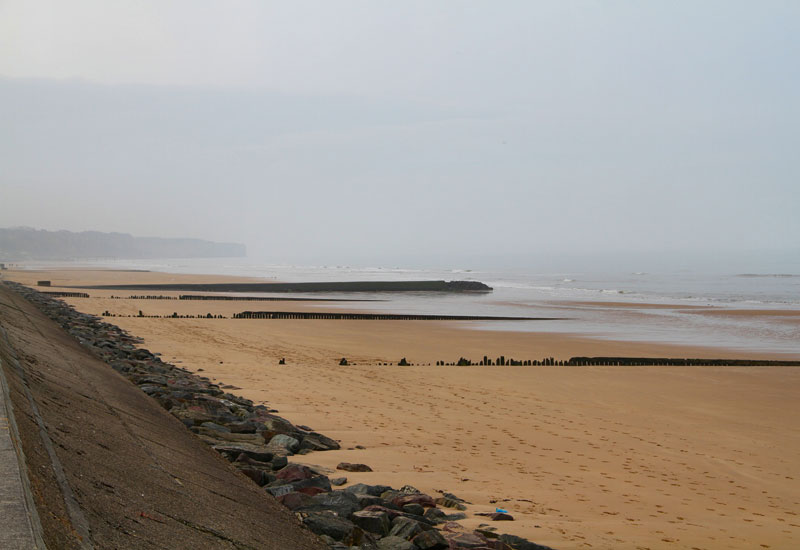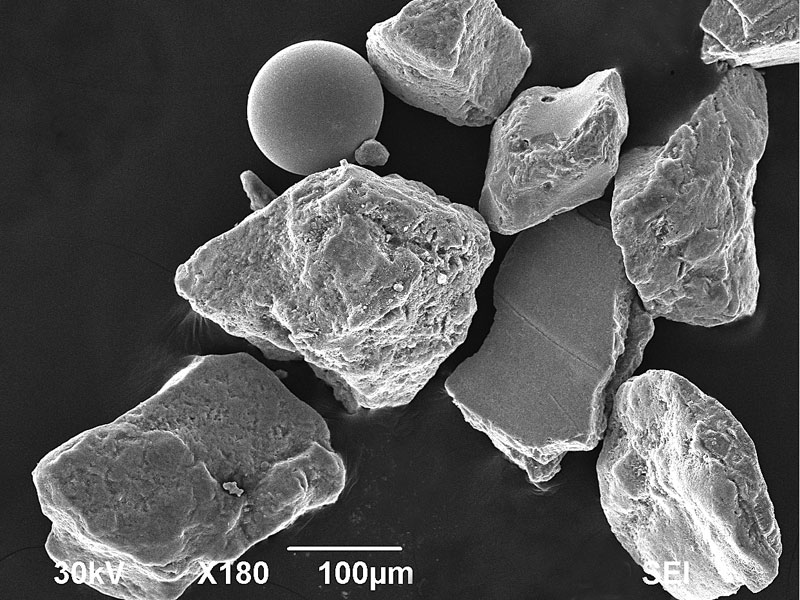Fragments of D-Day Battle Found in Omaha Beach Sand

Omaha Beach in Normandy, France, where U.S. troops landed on D-Day 68 years ago, now looks as calm as any beach could, with tawny sand meeting the water of the English Channel.
But geologists have found miniscule clues to the battle that took place here on June 6, 1944, between the arriving Americans and the German forces that occupied France during World War II: tiny, corroding fragments of shrapnel and nearly microscopic glass and iron beads created by the heat from mortar explosions.
When geologists Earle McBride and Dane Picard visited the beach in 1988 and collected a jar-size sample of sand, they intended to use it as a reference sample to help with other, unrelated research. They did not expect to find evidence of D-Day. [D-Day Gallery: Remnants Left in the Sand]
"It should have been apparent. It never occurred to us at the time we were there. The debris from the battle had been removed, and it looked like an ordinary tourist beach except the water was too chilly," McBride, a professor emeritus at the University of Texas at Austin, told LiveScience.
Back in the United States, after an initial examination under a microscope, the Omaha Beach sand went on the shelf, as other projects took priority. But about a year ago, McBride and Picard completed a thorough analysis of their sample.
Beach sand is typically composed of tiny grains of bedrock worn down by waves or carried in by rivers that have eroded their own bedrock. Some sand has a biological origin and contains particles of coral or shells.
Under a microscope, something unusual turned up in the Omaha Beach sand: angular, metallic grains.
Get the world’s most fascinating discoveries delivered straight to your inbox.
"Normal sand grains all show some degree of rounding due to collisions with their neighbors," McBride said.
Further analysis, including an examination of the composition of the angular fragments, revealed they were bits of iron, with red and orange rust (iron oxide) surviving on the protected parts of the grains. These were most likely the remains of shrapnel, metal thrown out by explosions.
Along with the tiny remains of shrapnel, Picard and McBride also found 12 glass beads and 13 intact iron beads, none more than 0.02 inches (0.5 millimeters) in diameter. Mortar blasts most likely created enough heat to melt the bits of iron shrapnel and even tough quartz, forming the spherical beads, McBride said.
While they calculated the bits of shrapnel accounted for 4 percent of their sample, this number is likely not representative of the beach as a whole, since the action of waves can concentrate grains of different densities, McBride said.
The American assault on Omaha Beach was part of a larger offensive by Allied troops launched on the coast of Normandy in 1944. Omaha Beach was the largest of five landing sites, and although Allied troops, including Americans, suffered heavy losses, they established a foothold in Normandy.
While tiny remnants of D-Day likely still remain in the beach, more than two decades after Picard and McBride picked up their sample, they are disappearing, McBride said.
"They wouldn't survive forever because salt water is highly corrosive to iron," he said. Salt water promotes rusting and the rust rind is softer than the iron itself, so the impacts of the waves continually remove the iron oxide coating, making the grains smaller and smaller, he said.
McBride and Picard's discovery is detailed in the September 2011 issue of the journal The Sedimentary Record.
Follow Wynne Parry on Twitter @Wynne_Parry or LiveScience @livescience. We're also on Facebook& Google+.




